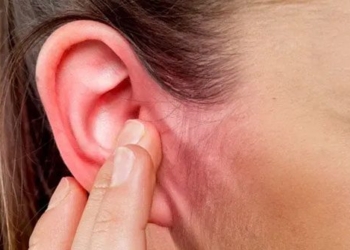Not only are the airways susceptible to allergies when spring arrives, but the eyes are as well. Eye allergies, also known as allergic conjunctivitis, come in various forms, and it’s essential to understand how to distinguish between their characteristic signs for appropriate treatment.
According to the American Academy of Ophthalmology, eye allergies, or allergic conjunctivitis, occur when the eyes come into contact with allergens. The eyes produce a substance called histamine to combat these allergens, resulting in redness, swelling, and itching of the eyelids and conjunctiva, often accompanied by tearing or a burning sensation.
Unlike other types of conjunctivitis, allergic conjunctivitis is not contagious. During spring allergy season, individuals often experience nasal allergies, itching, nasal congestion, and sneezing—symptoms that are typically temporary and related to seasonal allergies.
Thus, eye allergies can also be triggered by factors such as skin flakes, pet dander, dust, pollen, smoke, environmental pollution, or cold air.
Common Types of Eye Allergies and Their Symptoms
When thinking of eye allergies, the first symptom that usually comes to mind is itching or discomfort in the eyes. However, depending on the type of allergy, other symptoms may also present themselves. There are four basic types of allergic conjunctivitis, each with distinct characteristics.
1. Perennial Allergic Conjunctivitis and Seasonal Allergic Conjunctivitis
Perennial and seasonal allergic conjunctivitis are the most common forms of eye allergies. Typically, the symptoms of perennial allergic conjunctivitis are milder and often accompanied by allergic rhinitis.
Individuals with this type of allergic conjunctivitis are usually easily identifiable when they:
- Rubbing their eyes vigorously due to itchiness
- Developing dark circles under the eyes
- Experiencing swollen, red eyelids
- Having clear or white watery discharge with string-like mucus
- Feeling a burning sensation in the eyes.
Since what affects the eyes tends to also affect the nose, individuals with these types of allergies may exhibit symptoms similar to those of allergic rhinitis, including a runny nose, nasal congestion, and sneezing.
The causes of perennial and seasonal allergic conjunctivitis include mold, dust mites, skin flakes, pet dander, or other seasonal allergens like pollen, weeds, etc.

Typically, the symptoms of perennial allergic conjunctivitis are milder and often accompanied by allergic rhinitis. (Image: Internet)
2. Vernal Keratoconjunctivitis
Vernal keratoconjunctivitis can affect both the cornea and the mucous membrane of the conjunctiva. This condition has a clear allergic mechanism closely related to weather changes, especially during the spring-summer transition, including humidity and light, alongside the presence of common spring allergens such as pollen, dust mites, mold, and animal dander.
Individuals with vernal keratoconjunctivitis are often males under 10 years old living in arid, subtropical climates. Additionally, the condition tends to be associated with asthma or skin conditions such as eczema.
Symptoms may include:
- Severe itching, which is considered a characteristic symptom of the disease. Itching occurs in bursts at specific times of the day
- Feeling of a foreign body sensation in the eyelids known as papillae
- Ptosis (drooping of the upper eyelid)
- Tearing
- Decreased vision and sensitivity to light
- Significant eye discharge, thick and may form strands.
3. Atopic Keratoconjunctivitis
Atopic keratoconjunctivitis is a severe form of eye allergy that can involve the cornea as well as the inner lining of the lower eyelid. It typically occurs in young individuals, many of whom also suffer from atopic dermatitis, allergic rhinitis, and/or asthma.
Symptoms of atopic keratoconjunctivitis include:
- Severe itching
- Sensitivity to light
- Often accompanied by signs of atopic dermatitis on the face
- Thick eye discharge that can be stringy
- Swollen eyelids (papillae)
- Skin reactions around the eyes.
Moreover, individuals with atopic keratoconjunctivitis may develop blood vessels in the cornea or experience keratoconus, a condition where the cornea becomes cone-shaped instead of spherical, leading to decreased vision and increased light sensitivity.

Atopic keratoconjunctivitis is a severe form of eye allergy that can involve both the cornea and the inner lining of the lower eyelid. (Image: Internet)
4. Giant Papillary Conjunctivitis
Giant papillary conjunctivitis is primarily associated with contact lens use, where proteins in tears adhere to the surface of the lenses. With regular exposure to these proteins, allergy-like symptoms gradually develop. Large papillae begin to form on the underside of the upper eyelid, adhering to the contact lens, causing repeated friction and inflammation.
Symptoms of giant papillary conjunctivitis include:
- Itching
- Stringy eye discharge
- Discomfort, misalignment, and a sensation of having a foreign body while wearing contact lenses.
In general, the treatment for eye allergies will depend on the specific type of eye allergy you are experiencing, but the most crucial step is to eliminate the allergen. When the situation worsens, prescribed eye drops or oral medications from a doctor can help alleviate symptoms. It is important to hydrate and lubricate the eyes with artificial tears to constrict blood vessels and reduce itching.





















































